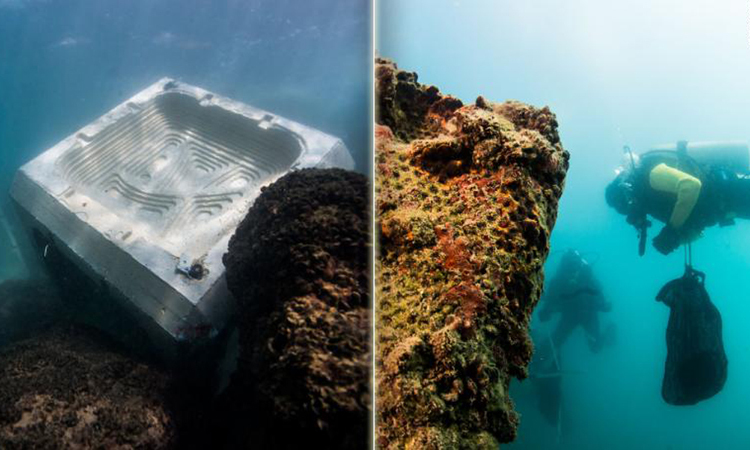
Các khối vật liệu ECOncrete mô phỏng hình dạng và kết cấu bề mặt của đá giúp sinh vật biển bám vào. Ảnh: ECOncrete
Mực nước biển dâng đang khiến cho nhu cầu về các biện pháp chống ngập tăng lên. Tuy nhiên, bê tông, vật liệu chính sử dụng trong nhiều tường chắn nhân tạo, có thể ảnh hưởng lớn đến sinh vật biển và khí hậu. Nhằm giúp các công trình ven bờ bền vững và thân thiện với môi trường hơn, startup Israel ECOncrete phát triển sản phẩm có thể giảm lượng khí thải carbon và thu hút sinh vật biển.
Các công trình bê tông ven bờ mang lại nhiều lợi ích cho con người. Tuy nhiên, rất nhiều sinh vật biển cũng sống gần bờ và những cấu trúc nhân tạo này có thể phá hủy hệ sinh thái của chúng. "70% cấu trúc ven biển trên thế giới làm bằng bê tông", nhà sinh thái biển Ido Sella, nhà đồng sáng lập kiêm CEO ECOncrete, nói với CNN hôm 4/10.
Bê tông có thể rỉ ra các chất hóa học khiến vùng nước xung quanh tăng độ kiềm và một số sinh vật biển khó sống hơn. Bề mặt phẳng, nhẵn của các cấu trúc như tường chắn sóng cũng khiến sinh vật biển như tảo, hàu và hà khó bám vào.
ECOncrete chế tạo những chất phụ gia có thể trộn với bê tông, giúp vật liệu này cân bằng hóa học với nước biển tốt hơn. Công ty cũng sản xuất các khối tường chắn mô phỏng theo hình dạng và kết cấu của đá biển. Chúng có những rãnh tí hon trên bề mặt để ấu trùng bám vào và phát triển, mặt bên nhấp nhô và những hố trũng nông giữ lại nước biển giống như hồ thủy triều nhỏ.
Sản phẩm của ECOncrete đã được lắp đặt tại hơn 35 địa điểm trên thế giới trong 8 năm qua, bao gồm New York, Rotterdam và Monaco. Sella cho biết, chúng có thể tăng hơn gấp đôi tính đa dạng sinh học so với bê tông truyền thống. Điều này cho phép thế hệ sinh vật tiếp theo phát triển trên bề mặt bê tông và thu hút các sinh vật khác, khởi động một hệ sinh thái tự duy trì.
Bê tông truyền thống không chỉ gây hại sinh vật biển mà còn thải ra lượng lớn khí carbon. Xi măng, một thành phần của bê tông, đóng góp đến 8% lượng khí thải carbon của thế giới. ECOncrete cho biết, các chất phụ gia của hãng này làm giảm lượng xi măng cần thiết trong hỗn hợp bê tông, từ đó giảm lượng carbon. Tuy nhiên, một số nhà sinh thái học cảnh báo rằng cấu trúc nhân tạo không thể thay thế hoàn toàn lợi ích sinh thái của bờ biển tự nhiên.
Các sinh vật sống trên bề mặt có thể giúp bê tông ECOncrete vững chắc hơn qua thời gian. Chúng bao bọc bê tông với một lớp canxi carbonat, một trong những thành phần chính của vỏ ốc, ngăn bê tông khỏi nứt vỡ và tăng độ bền kéo (tensile strength) lên 10 lần. Vật liệu mới đắt hơn bê tông truyền thống 15% nhưng sẽ tiết kiệm chi phí trong dài hạn vì không cần bảo trì nhiều.
Nguồn: Vnexpress. https://vnexpress.net/be-tong-tang-do-ben-khi-nuoi-sinh-vat-bien-4376353.html